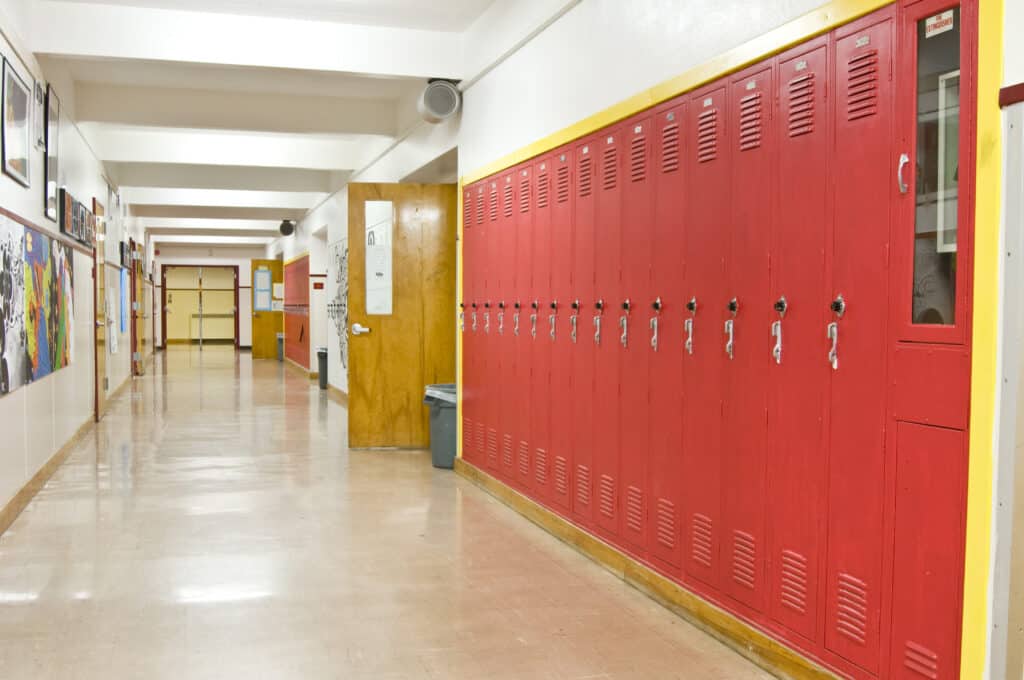In recent years, the issue of school safety has become increasingly important in the United States, particularly in Texas. To address this pressing concern, two distinct approaches have been implemented in Texas schools: the School Marshal Plan and the Guardian Plan. Both plans aim to enhance the overall security of educational institutions, but they differ in terms of requirements, strategies, and objectives.
The School Marshal Plan is designed to bestow educators and employees with law enforcement-type capabilities and responsibilities, while effectively arming them to respond to potential threats. In contrast, the Guardian Plan primarily focuses on providing carefully selected armed educators and employees with the necessary skills to defend themselves and their students in the event of an active shooter or similar emergency.
Despite their differing methodologies, both programs share a common goal: ensuring a safer educational environment. As such, it is crucial for schools, teachers, and parents to examine the advantages and disadvantages of each approach in order to make informed decisions regarding the most effective measures for their individual communities.
Texas School Marshals and School Guardians Overview
Marshal Program vs Guardian Plan
The Texas School Marshal Program was created to provide specially trained and licensed employees in Texas schools to prevent acts of murder or serious bodily injury on school premises. On the other hand, the Guardian Plan allows schools to have armed staff members who are not necessarily trained as marshals, but serve a similar purpose of protecting the school community.
The School Marshal Program is more regulated and requires marshals to undergo a rigorous training process, including obtaining a license and certification from TCOLE. These appointed marshals are authorized to carry a concealed handgun on school premises following specific written regulations.
In contrast, the Guardian Plan does not have the same level of “mandated” training requirements and regulatory oversight. However, it does offer more flexibility for schools to implement security measures according to their local needs and circumstances.
Roles and Responsibilities
School Marshals:
- Prevent acts of murder or serious bodily injury on school premises
- Act only as defined by the written regulations adopted by the School Board/Governing Body
- Appointed by the board of trustees of a school district or the governing body of an open-enrollment charter school
- May carry a concealed handgun or possess a handgun on the physical premises of a school, following specific written regulations
School Guardians:
- May be armed staff members designated by the school administration
- Do not have specific training or licensing requirements like school marshals
- Serve a similar purpose of protecting the school community from potential threats
- Offer more flexibility for schools to implement security measures based on local needs and circumstances
Both the Texas School Marshal Program and the Guardian Plan aim to increase safety in Texas schools by allowing qualified and authorized individuals to carry firearms on school premises. While these programs differ in their training and regulatory requirements, their ultimate goal is the same: to protect students, staff, and everyone within the school community from potential threats.
History and Legislation
Texas Legislature Origin
The Texas School Marshal Program was created in 2013 in response to the need for increased school safety measures. Implemented by the Texas Commission on Law Enforcement, the program provides training for qualified individuals to act as armed law enforcement officers on school premises. The main goal of the School Marshal is to prevent acts of murder or serious bodily injury in schools. This was later expanded to include public junior colleges and private schools.
On the other hand, the School Guardian Plan was designed to give handpicked educators and employees the ability to defend themselves and students during an active shooter or other critical situations.
Impact of Santa Fe High School
The tragic incident at Santa Fe High School in 2018 further highlighted the need for effective school safety measures in Texas. The shooting had a significant impact on the discussion and implementation of both the School Marshal and School Guardian Plans.
In response to the Santa Fe shooting, Texas lawmakers reevaluated and expanded the programs to include more training and support for participants. The program now requires a candidate to complete an 80-hour training course.
While both plans aim to increase safety in schools, they have different focuses:
- School Marshal: Provides educators and employees with some law enforcement-type capabilities and responsibilities to protect students and staff.
- School Guardian: Focuses on giving selected educators and employees the ability to protect themselves and students during critical incidents.
The identities of School Marshals and Guardians are confidential, ensuring the public is not aware of the specific details concerning the selection, qualifications, and training of these individuals.
Training and Qualifications
Texas Commission on Law Enforcement Requirement
The Texas Commission on Law Enforcement (TCOLE) plays a crucial role in the training and certification of Texas School Marshals. As mentioned above, after a school district applies for the program, a candidate must attend an 80-hour training course conducted by a law enforcement academy specifically prepared to provide the school marshal curriculum.
On the other hand, the School Guardian program has different training requirements, usually dictated by the local governing body, and is generally considered less regulated than the School Marshal program.
Psychological Exam
Before participating in the training program, a candidate for the School Marshal program must pass a psychological exam. This requirement ensures that candidates are mentally capable of handling the unique challenges and responsibilities associated with being a school marshal.
The psychological exam is not mentioned as a requirement for the School Guardian program, which means that the level of scrutiny regarding the mental health of participants may be different between the two programs. However, having Guardians complete a psychological exam should be strongly considered.
Weapon Proficiency
Weapons proficiency is a key component of the training process for both School Marshals and School Guardians. The 80-hour training course for School Marshals includes instruction on various topics, such as:
- physical security
- improving the security of the campus
- use of force
- active shooter response
- weapon proficiency
The Guardian program also requires participants to be skilled in using firearms, but specific details about the training requirements may vary between districts. Once requirements are established, districts often contract outside training companies to facilitate Guardian training.
Overall, both School Marshals and School Guardians are expected to be proficient in using firearms to provide protection for their respective campuses, but the exact training requirements and qualifications may differ between the two programs.
Implementation and Procedures

School Marshal Appointment Process
The School Marshal program in Texas requires specific procedures to be followed for appointment and implementation. One of the initial steps involves the appointing entity submitting a completed Appointing Entity Number Application to the Texas Commission on Law Enforcement (TCOLE). This form designates all authorized signatures on forms and paperwork for the program.
After this, the appointing entity selects candidates for the School Marshal position. Candidates must be employees of the school or college in question. The cost of the program is relatively low, at approximately $6,000 per participant, which makes it a potential solution for enhancing school safety in some districts.
Active Shooter
When it comes to addressing active shooter situations on school premises, there are differences between School Resource Officers and School Marshals. School Resource Officers are typically full-time, trained law enforcement officers who provide security and other services at schools. They are a consistent presence on campuses and are expected to respond directly to active shooter incidents in addition to their other duties.
School Marshals, on the other hand, are employees of the school who have undergone specific training to deal with active shooter situations. They act as a supplement to the School Resource Officers, and their identities are often kept confidential to maintain an element of surprise in case of an emergency. As of fall 2020, there were only 239 School Marshals in 58 Texas school districts, which shows an increase in the program’s utilization, but the numbers are still low.
The School Guardian Program also offers Texas schools another option to address active shooter situations. The School Guardians program is similar to the School Marshal program in that it can supplement SROs, but it differs in that it allows for a larger number of trained personnel to carry firearms on campus. As with all the methods mentioned, joint or combined training is necessary to increase capabilities.
The appointment and implementation of these options contribute to making Texas schools safer and more secure while possibly providing a more cost-effective solution compared to hiring full-time law enforcement officers. With the rising number of active shooter incidents across the nation, programs like these become essential for protecting students and staff alike.
Benefits and Challenges
Student and Educator Safety
One of the primary benefits of implementing programs like the Texas School Marshal and School Guardian Plan is the potential increase in student and educator safety. By having specially trained and authorized personnel on campus, the programs aim to deter potential attacks and provide an immediate response to active threats. These programs can also complement existing armed law enforcement capabilities and help protect school facilities.
However, there are challenges associated with these programs. For instance, the debate around introducing guns into schools raises concerns about negligent discharges and the general safety of having firearms in an educational environment. However, this concern has not played out up to this point. Additionally, the cost of implementing these programs can be an obstacle for some schools, with the School Marshal program costing around $6,000 per participant.
Arming Teachers Debate
The debate surrounding arming teachers has been a major topic of discussion in recent years and will probably continue to be. Advocates for programs like the Texas School Marshal and School Guardian Plan argue that allowing educators to carry handguns can provide an additional layer of protection for students, as well as serve as a deterrent for potential attackers. Especially since these programs require participants to undergo certain school safety training, which includes learning how to handle and use firearms safely and effectively.
On the other hand, opponents of arming teachers argue that introducing guns into the classroom creates unnecessary risks and potentially exacerbates the issue of gun violence in schools. They contend that the focus should be on addressing the root causes of school violence, such as bullying and mental health issues, rather than relying on armed personnel as a solution. I will reiterate, the concerns over these programs creating unnecessary risk and exacerbating gun violence have not come to fruition.
Legal and Regulatory Framework
License to Carry
As mentioned above, the School Marshal program is governed by the Texas Commission on Law Enforcement (TCOLE), which requires a specific licensing and certification process for appointed marshals. And the Guardian Plan is a more straightforward approach, where participating staff members must hold a License to Carry (LTC) issued by the state of Texas.
Written Regulations
The Protection of Texas Children Act, or the school marshal law, empowers boards of trustees or governing bodies of school districts and open-enrollment charter schools to appoint one or more school marshals for each campus. The appointed school marshal must have the appropriate licensing and certification, according to TCOLE. The purpose of a school marshal is to prevent the act of murder or serious bodily injury on school premises, and their actions must be defined by the written regulations adopted by the school board or governing body.
Use of Force
While both plans have similar intentions of improving school safety, they differ in certain aspects, such as the use of force. School marshals, as part of their TCOLE certification, receive specialized training in responding to active-shooter situations, use of deadly force, and legal requirements for using force on campus. The Guardian Plan participants, holding a License to Carry (LTC), are subject to the Texas Penal Code’s general provisions regulating the use of force, without any specific training or certification for responding to school-based incidents.
In summary, the legal and regulatory framework surrounding the School Marshal and Guardian Plans in Texas involves distinct licensing and certification requirements, written regulations adopted by the governing bodies, and varied provisions related to the use of force while fulfilling their duties as armed school staff members.
The Role of Stakeholders
School Districts
School districts in Texas, including public schools and charter schools, have the option to implement the School Marshal or School Guardian program as part of their safety measures and school districts must carefully assess their specific needs and resources when deciding which program to adopt. Factors to consider include cost, personnel availability, and community preferences.
School Board Members
School board members play a crucial role in selecting and adopting either the School Marshal or School Guardian program within their district. They have the responsibility to:
- Review the options available and assess their suitability for the district
- Develop and implement written regulations for the chosen program
- Consult with stakeholders, such as parents, teachers, and students, to ensure the chosen program meets community needs
- Continuously monitor and evaluate the program’s effectiveness for ongoing improvement
- Develop training requirements
Future Prospects and Recommendations
As the safety of students and staff in Texas schools continues to be a pressing concern, the School Marshal Plan and Guardian Plan have emerged as two viable options for bolstering security. Although both programs aim to protect educational institutions from threats, their approaches differ and should be considered based on the specific needs of each school district.
Moving forward, it is recommended that school districts explore both options thoroughly to identify the most suitable strategy for their needs. Depending on the school’s size, locations, local regulations, and resources, every district’s approach may be different based on what they deem appropriate.
In addition, policymakers and educational leaders should consider supplementing armed security personnel with other security measures, such as surveillance cameras, controlled access points, and emergency lockdown procedures, to augment overall safety across campuses. Collaboration and open dialogue can facilitate the development of comprehensive security strategies that prioritize the well-being of all stakeholders.
Lastly, a continued investment in mental health resources cannot be overlooked, as addressing the root causes of violence should be an integral part of any comprehensive approach to school safety. By fostering supportive environments and focusing on early intervention and prevention, schools can not only ensure the physical safety of students and staff but also nurture positive, inclusive, and thriving educational communities.
Conclusion
In comparing the Texas School Marshal program with the School Guardian program, several key differences come into focus. Both programs aim to improve the safety of school campuses, but they have distinct goals and requirements.
The School Marshal program aims to prevent acts of murder or serious bodily injury on school premises, with marshals acting in accordance with the written regulations adopted by the school board. This program requires training and certification, ensuring that appointed individuals are able to respond effectively to violent incidents.
On the other hand, the School Guardian program offers a less regulated alternative to school districts, allowing them to appoint staff members as guardians who can carry firearms on campus. This program provides flexibility for districts that opt for the guardian approach over the marshal program.
Costs associated with these programs also impact a school district’s choice. The School Marshal program does have a higher financial burden due to training and certification requirements.
In conclusion, the decision to implement the Texas School Marshal or School Guardian program ultimately depends on a school district’s specific needs, budget, and approach to school safety. Each program has its merits, and a thorough assessment of both options should be conducted to determine which best aligns with the goals of the district and meets the needs of their students and staff.
Are you looking to improve the safety of your school campus? Do you want to explore the benefits and drawbacks of different school safety programs? Our team of experts can provide a comprehensive assessment of your school district’s needs and help you determine which program best aligns with your goals and budget. We offer customized training solutions to ensure that your staff members are equipped to respond effectively to violent incidents.
Contact us today to learn more about our services and how we can help you improve the safety and security of your school campus.






